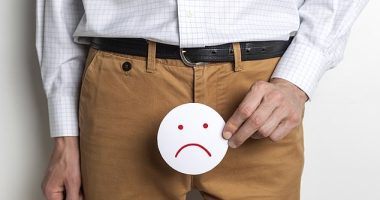But ablutophobia can continue into adulthood or pop up later in life, and, like other phobias, it is a type of anxiety disorder that “includes intense, irrational fear of an object, situation, or activity,” says Amy Braun, PhD, a licensed clinical professional counselor and certified clinical anxiety therapist who specializes in therapy for moms.
Experts In This Article
To be clear, ablutophobia isn’t just an aversion to the act of cleaning yourself. It’s a crippling yet unreasonable fear that often comes with symptoms of panic and anxiety, explains clinical psychologist Kevin Chapman, PhD, founder and director of the Kentucky Center for Anxiety and Related Disorders. “The key is that it causes significant distress, or that it impairs functioning in one or more areas,” he says.
If you’re having trouble bathing yourself or your child and you think it might be ablutophobia, here’s what you need to know, and how to stop letting this fear dictate your life.
In This Article
What are the symptoms of ablutophobia?
The symptoms of ablutophobia include distress in response to bathing. In addition, people with ablutophobia may experience anxiety and panic in anticipation of having to bathe, Dr. Chapman says. That’s because ablutophobia falls under the umbrella of specific phobias, a type of anxiety disorder, explains Dr. Braun. Specific phobias involve an extreme and irrational fear toward a specific object or situation that poses little to no danger. (Some other specific phobias include germaphobia, entomophobia, and aerophobia, for example.)
If you’re dealing with ablutophobia, bathing may result in feelings of anxiety or panic, as can any cues associated with bathing, including a bathroom, bathtub, sprayer nozzle, or anything that represents the potential of needing to bathe or clean or wash.
Too, in order to be considered a phobia, there must be a persistent fear of bathing, not a one-time occurrence, Dr. Braun explains. “A person with ablutophobia has experienced this fear for a long time and across settings.”
Here are other specific symptoms of ablutophobia, according to Dr. Braun:
- Severe anxiety or panic: These feelings can manifest with a rapid heartbeat, sweating, difficulty breathing, or having intense feelings of dread when encountering or even just thinking about bathing.
- Avoidance: People with this phobia may avoid anything related to bathing or showering, and go to great lengths to avoid situations that involve cleaning themselves.
- Physical symptoms: Someone may experience headaches, stomach aches, or dizziness (in addition to the aforementioned feelings of anxiety and panic) when confronted with their fear of bathing.
- Daily functioning is impacted: It’s more likely to be considered a phobia is the irrational fear of bathing is disrupting or impacting daily functioning.
How rare is ablutophobia?
While there is no current research indicating how rare ablutophobia is, there are estimates on the prevalence of specific phobias within the general population. Studies1 indicate that the prevalence of specific phobias is somewhere between 3 and 15 percent in the general population, and around 5 percent in children2.
“In terms of the prevalence of ablutophobia, in particular, I would say less than one percent of people would have that,” he adds. Compared to more common phobias of animals, heights, and small spaces, “this one is exceptionally rare,” he says.
How is ablutophobia diagnosed?
Ablutophobia isn’t listed in the Diagnostic and Statistical Manual of Mental Disorders (DSM-5-TR), the authoritative guide health professionals use to diagnose mental disorders. This means that ablutophobia itself isn’t a mental disorder diagnosis, but can certainly be recognized as part of a diagnosis of either an anxiety disorder or other condition. For example, says Dr. Chapman,“what we often conceptualize as a phobia—like in the case of ablutophobia, with washing and cleaning—if you assess it, it could be considered a symptom of obsessive compulsive disorder (OCD) or something else,” Dr. Chapman explains.
To reach a diagnosis, a mental health professional will conduct a clinical interview, asking about the history of the fear, past experiences, any other present fears, and more specifics about how they react when they’re in the feared situation.
The key differentiator between a phobia and a reasonable fear, says Dr. Chapman, is the extent to which it negatively impacts the patient’s quality of life. “Fifty percent of the population has what we call non-clinical fear of something,” Dr. Chapman explains. “There’s a difference between having a nonclinical fear and a phobia of something; a phobia disrupts your life in a significant way.” Another key indicator is that, with a phobia, there’s anxiety or panic in advance, in response to just the potential of encountering the feared thing, Dr. Chapman says.
Why would a person not want to bathe?
A person might not want to bathe for any number of reasons, regardless of whether they’re ablutophobic. “Someone who doesn’t like bathing may find it inconvenient, unhelpful, or annoying,” Dr. Braun explains.
To be clear, ablutophobia is quite different from a general aversion to bathing. People with the latter may not want to bathe, but it doesn’t impair their daily functioning, and they can manage it without experiencing intense anxiety. “On the other hand, people with ablutophobia experience severe anxiety and change their behavior (such as avoidance) based on their fears,” she says.
If you don’t think you have ablutophobia but simply don’t enjoy bathing or taking showers, consider ways to make your shower more relaxing or even try shower affirmations to change your perspective on the experience.
What triggers ablutophobia?
Ablutophobia is often triggered in toddlers and children due to the developmental stage that they are in, says Dr. Braun. While it is also possible for adults to develop ablutophobia, she adds, this scenario is less common.
Phobias typically develop as a result of three main pathways3, Dr. Chapman explains. And they’re not mutually exclusive: Oftentimes, two or even all three are at play, each responsible for creating a phobic reaction. Each primary pathway is further explained below.
Direct traumatic experience
In toddlers and children, this could include “near drowning, a slip in the bathtub, burning themselves, getting water up their nose, or overly forceful bathing by parents,” says Dr. Braun. “Their brains associate bathing with a traumatic experience which leads to intense fear and avoidance.”
In adults, a traumatic experience prompting ablutophobia could also include a near-drowning, a sexual assault, or physical abuse.
Observational learning or modeling
This pathway involves learning the emotional response of fear toward the object or situation from others, explains Dr. Chapman. For example, “children may observe a sibling or their parent displaying fear and anxiety related to bathing. They learn that bathing is not a safe activity and develop an intense fear,” Dr. Braun says.
Informational transmission
The third and final pathway, information transmission, involves hearing about someone else reacting in a negative way toward bathing or experiencing a direct trauma around bathing, Dr. Chapman says.
Who is most likely to develop ablutophobia?
As for who is most likely to develop ablutophobia, women appear to be more likely to suffer from a specific phobia than men, according to the National Institute of Mental Health. Specific phobias are likely to coexist with other anxiety disorders like generalized anxiety, social anxiety, or other phobias, Dr. Chapman says. So if you have other types of anxiety, you’ll be more likely to develop a phobia than someone who doesn’t deal with anxiety.
Genetic predisposition4 plays an important role as well. “There are just certain people who have a hyperactive limbic system,” says Dr. Chapman, which can make them more likely to develop a specific phobia. (ICYDK, the limbic system includes the amygdala, hippocampus, and hypothalamus, and plays a primary role in the regulation of emotions, including fear.)
What are the complications of ablutophobia?
The complications of ablutophobia stem from how the phobia impairs functioning and disrupts daily life, two symptoms that are required in order to be diagnosed with a phobia. “It impairs your activities of daily living,” says Dr. Chapman. These symptoms may make it difficult—or even impossible—to live a quality life, impeding your ability to enjoy yourself, go on vacations, work, or remain in school.
When it comes to ablutophobia, the immediate complication is poor physical hygiene, Dr. Braun adds. “Not bathing can lead to illness, infections, dental problems, and other health issues.” Those repercussions can lead to social isolation or impact family dynamics and marital relationships, increasing tension, frustration, yelling, and stress around hygiene routines, she says.
Moreover, “ablutophobia can be time-consuming and make routine activities a challenge,” says Dr. Braun. “It may take someone with ablutophobia a very long time to work up the courage to wash their hands or take a shower.” In turn, the condition can affect school performance in children and overall productivity in adults, she adds. Not to mention, the stress of managing this type of phobia can negatively affect mental health and well-being.
How do I get rid of ablutophobia?
For those hoping to get rid of ablutophobia, cognitive behavioral therapy (CBT), a psychological treatment that involves changing your thinking patterns, is the gold-standard treatment for specific phobias5, Dr. Chapman says.
And the odds of professional treatment being a success are favorable: “It’s something that you can overcome in a relatively short amount of time,” he says. Within CBT, Dr. Chapman says there are specific techniques that can be especially helpful in treating phobias, outlined below.
Exposure Therapy
Repeated exposure to the feared object or action (in this case, bathing, showering, or washing oneself) can essentially extinguish the fear involved with that object or action, thanks to a concept called “extinction learning6,” says Dr. Chapman. “Exposure is based upon confronting the feared object or situation until new learning occurs in the brain.”
There are a few different types of exposure therapy, including gradual exposure or graduated exposure (moving slowly from one level of exposure to the next), in vivo exposure (confronting a fear in real time), and imaginal exposure (confronting images of the fear in your brain). “The most powerful, for sure, in the case of this type of phobia, is definitely in vivo or real-life exposure,” says Dr. Chapman.
Cognitive Restructuring
In addition to exposure therapy, “you can also do some cognitive restructuring where you basically treat your thoughts like hypotheses, not facts,” Dr. Chapman explains. That might look like pausing to consider whether a particular concern about bathing might reflect one potential truth or outcome in a set of possible outcomes, versus the only one.
What to do if your young child is dealing with ablutophobia
If your child is dealing with ablutophobia, there’s good news: “The large majority of people who have a fear like this early on in childhood, typically grow out of it,” Dr. Chapman says. However, the way that they grow out of it is that you have to allow them to learn that bathing is safe.
“The key with CBT is learning a new non-threatening association in the brain,” says Dr. Chapman. “So, parents don’t need to coddle. They need to normalize the anxiety and allow the kid to be uncomfortable while they learn, ‘It’s not as bad as I thought.’”
To help your toddler move past their ablutophobia, Dr. Braun recommends the following:
1. Gradual exposure
“Slowly introduce the child to the bathing process,” Dr. Braun explains. “Start with activities that are not stress-inducing like playing with bath toys in the hallway or living room. Gradually move these fun, bathing-related activities closer to the bathtub or have them play in the tub when it is empty. This can make bath time feel less intimidating and give them confidence.”
2. Make bath time fun
Use things that reinforce the positive part of bathtime to their child, such as bubbles, bath crayons, or toys. “This helps rewire the negative association in their brain with bath time,” Dr. Braun says. “Creating a positive environment is key to helping children overcome ablutophobia.”
3. Give them choices
Let your child decide on some aspects of bathtime (for example, the temperature of the water, when bathtime happens, or which toys to bring) in order to give them more control over the situation. “This can help reduce feelings of fear and helplessness,” Dr. Braun says.
4. Stay calm, soothing, and positive
“Children pick up on their parent’s verbal and non-verbal cues,” Dr. Braun says. This is why she recommends against ever shaming, yelling, name-calling, or putting the child down, in order to get them to bathe, as this can only reinforce the idea that bathing is a negative experience. “Staying calm and reassuring can go a long way in decreasing a child’s anxiety at bath time,” she says. “Use praise and rewards for each step your child shows toward overcoming their fear. Positive reinforcement changes behavior much faster than punishment.”
Well+Good articles reference scientific, reliable, recent, robust studies to back up the information we share. You can trust us along your wellness journey.
- Eaton, William W et al. “Specific phobias.” The lancet. Psychiatry vol. 5,8 (2018): 678-686. doi:10.1016/S2215-0366(18)30169-X
- Davis, Thompson E 3rd et al. “Intensive Treatment of Specific Phobias in Children and Adolescents.” Cognitive and behavioral practice vol. 16,3 (2009): 294-303. doi:10.1016/j.cbpra.2008.12.008
- King, N J et al. “Etiology of childhood phobias: current status of Rachman’s three pathways theory.” Behaviour research and therapy vol. 36,3 (1998): 297-309. doi:10.1016/s0005-7967(98)00015-1
- Loken, E K et al. “The structure of genetic and environmental risk factors for fears and phobias.” Psychological medicine vol. 44,11 (2014): 2375-84. doi:10.1017/S0033291713003012
- Sheilla Varadhila Peristianto, Kamsih Astuti (2022). Decreasing Symptoms of Specific Phobias With Cognitive Behavior Therapy. Malaysian Mental Health Journal, 1(1): 12-14.
- Pittig, Andre et al. “The key role of extinction learning in anxiety disorders: behavioral strategies to enhance exposure-based treatments.” Current opinion in psychiatry vol. 29,1 (2016): 39-47. doi:10.1097/YCO.0000000000000220
Source: Well and Good







